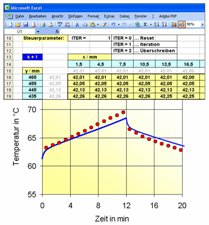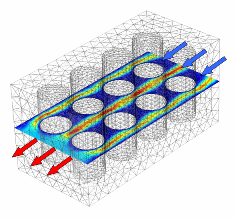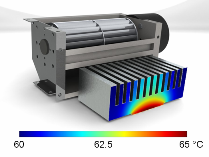


Motivation
For the development of tailored material systems it is of basic importance to adjust the final properties according to the requirements of a later implementation in a technical system. Additionally, the optimised use of available materials mostly offers a significant improvement of the system performance. In all cases the investigation of the special system behaviour is needed.
In comparison to a mostly very expensive experimental method numerical simulations represent a flexible and cost-efficient alternative solution. Special advantages are the comfortable variation of different influencing parameters as well as the modelling of operating conditions which could not be investigated experimentally. Any successful numerical simulation requires a detailed understanding of the basic physical phenomena.
Simulation Competency
Additional to multiple experiences in programming individual solution procedures at the Fraunhofer IFAM Dresden, an efficient software package (COMSOL Multiphysics) is available for the numerical simulation of multi-physical phenomena. The modelling of heat and mass transfer problems, fluid and electrical flow and phase changes are possible in the same way like mechanical stresses, chemical reactions and the coupling of all these effects.
Typical applications are:
- calculation of steady-state and transient temperature fields in (an-)isotropic bodies,
- modelling of velocity and pressure distributions,
- simulation of heat conduction, convection and radiation and
- determination of thermo-mechanical stresses in composites.
 Fraunhofer Institute for Manufacturing Technology and Advanced Materials IFAM
Fraunhofer Institute for Manufacturing Technology and Advanced Materials IFAM